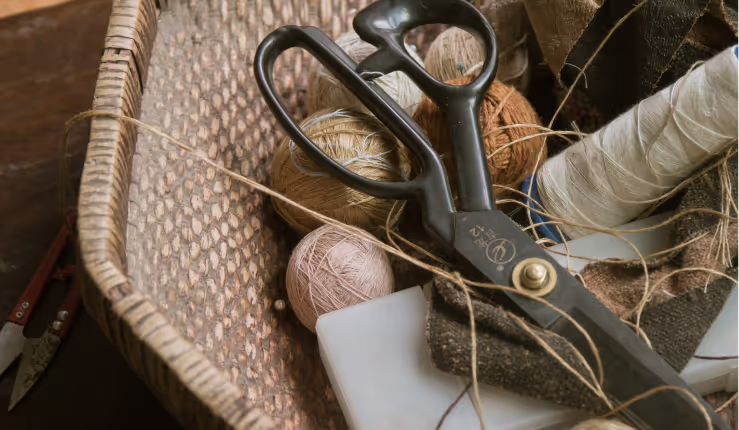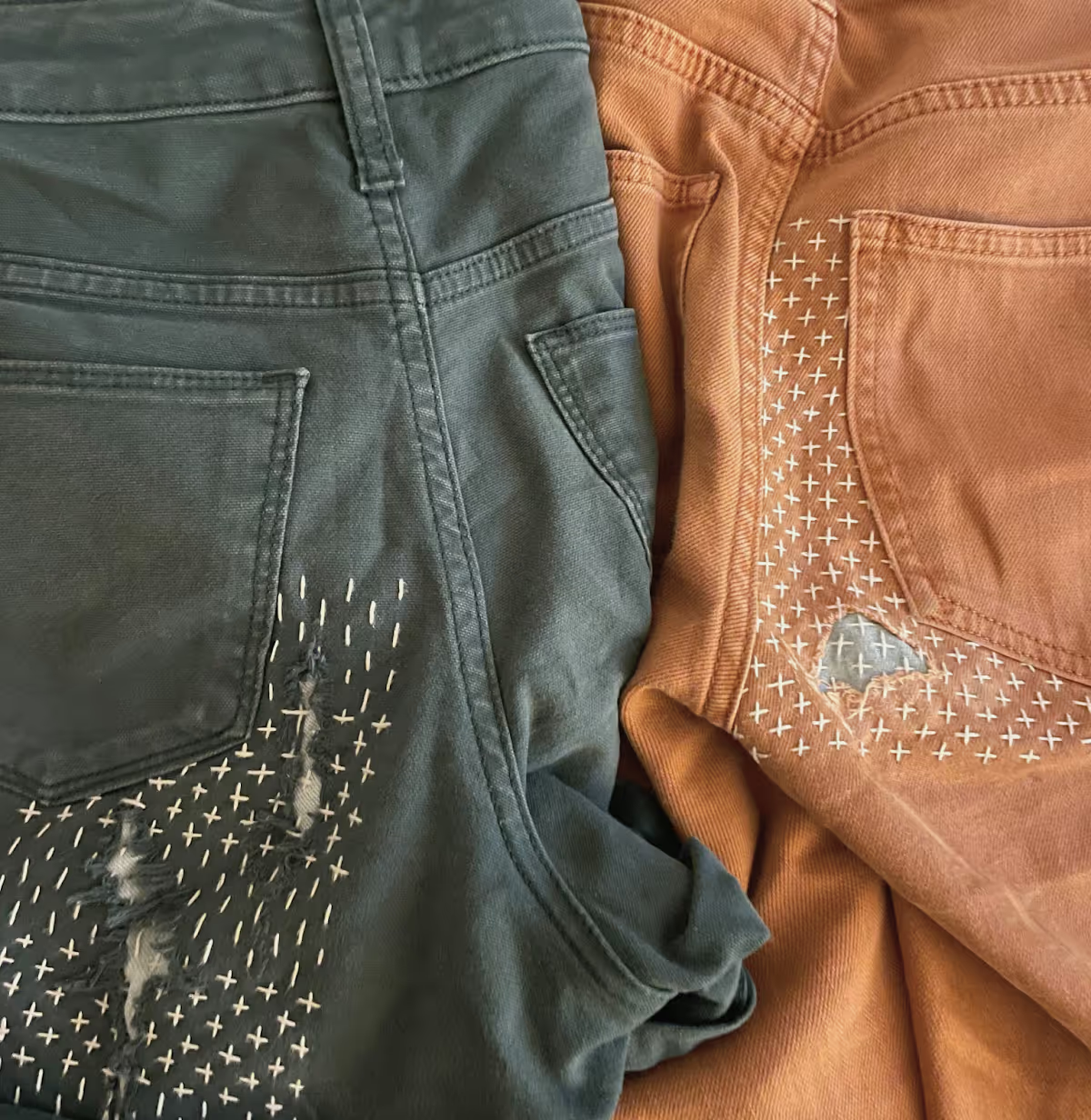The Basics of Mending Your Clothes

Join the community





A rip, tear, or hole is no reason to get rid of a piece of clothing. Learning the basica of mending your clothes won't just save you money it's a a way to take climate action. The longer we wear our clothes and the less we buy new, the less we need to rely on polluting industries like fast fashion.
And you don't need to be an expert tailor to repair your favorite clothes. Anyone can learn basic mending skills with just a few tools and a bit of time.
1. Gather the basic tools
When you’re learning how to mend clothing, patience is your most important tool. But it helps to have a few other items on hand:
- Needles: A pack of household “sharps” needles is all you need for most hand sewing projects.
- Thread: As a rule of thumb, thread should be the same material and weight as the garment. (Learn more here.)
- Embroidery Hoop: Embroidery hoops help keep fabric taut, which makes stitching much easier.
- Sharp Scissors: Specialty sewing shears cut with more precision than household scissors.
- Ruler: A sewing ruler set can help with tricky curves and angles.
- Pencil/Water-Soluble Pen: To mark the fabric before you sew. (Make sure it’s washable!)
2. Get to know the basic stitches
Keep your stitches simple when you’re starting out. An ordinary running stitch will suffice for many mending projects. Backstitching helps when you need a little extra reinforcement, and whip stitches are great for pesky seams. This Lifehacker blog explains the five basic hand stitches you should know.
3. Decide on the best mending method
1. Minor Repairs
Popped buttons, snags, and frayed seams are common early signs of wear and tear. Luckily, they're also the easiest to mend. Done right, these repairs can even make your clothing stronger.
- Mending Seams: First, turn the garment inside out, find where the rip begins and ends, and tie off the loose ends. Next, pin the seam back together and make a running stitch extending half an inch on either side of the tear. (See the process step-by-step.)
- Attaching Buttons: Thread the needle from the inside of the garment up one hole and back down through the other, alternate and repeat 2-3 times. For four-hole buttons, thread diagonally to make an X. (Here’s a quick how-to video.)
- Rips and Snags: Sewing small rips back together is simple, and only takes a minute. For larger tears you don’t want to patch, try darning. A technique similar to weaving, darning works for both invisible mending and accenting the repair.
2. Visible Mending
Most traditional mending techniques seek to conceal the repair altogether. In contrast, the modern “visible mending” movement is far less discrete. Visible mending draws attention to the restoration with contrasting thread and fabric or decorative stitching. It’s equal parts style opportunity and act of social subversion.
One of our favorite methods of visible mending is sashiko. Sashiko is a form of artful mending developed in Japan over 400 years ago. Once used by working-class families to reinforce their workwear, Sashiko has evolved into a beautiful decorative craft.
The word Sashiko translates into “little stabs,” which is fitting for the delicate geometric patterns that characterize this style of mending. In sashiko, a hole or worn-out piece of fabric is reinforced with layers of cloth - traditionally indigo-dyed - and white thread to create a stunning textile design.
Discover 5 other types of visible mending →

I couldn’t tell you the number of pants I donated because they had rips, holes, or just didn’t fit right anymore. I love that I’m able to breathe new life into my favorite jeans – and make them even more beautiful than before! Sashiko has been a blast to learn and is so gratifying. - Madeline Streilein, Commons Software Engineer
Upcycle and Upgrade Your Clothes
If a garment is particularly damaged in one spot, or you’re simply bored with it – rework it! These simple DIY upcycling projects are easy to master.
- Crop Garments: crop grass-stained or damaged jeans, pants, and skirts into shorter garments. You can leave a raw edge or hand sew a hem.
- Paint your clothes: fabric paint and decals are a great way to cover up spills and stains, or give an old favorite some pizazz. Learn how here – or try these tips for stain removal.
- T-Shirt Hacks: with a little creative vision, you can turn worn-out tees into all types of funky crop tops. Check out this DIY video to get inspired.
- Repurpose it: if that beloved flannel has simply got to go, turn it into a handmade dish cloth or beeswax wrap.
- Patch Graphics: turn worn-out graphic tees into custom patches and spice up basic wardrobe staples.

Five TikTok Menders to Follow
For a bit more mending inspiration to kickstart your practice, here's 5 TikTok menders we’re inspired by:
- @jitterbybug
- @wandy
- @VSR
- @LilyFulop
- @JudyGao













